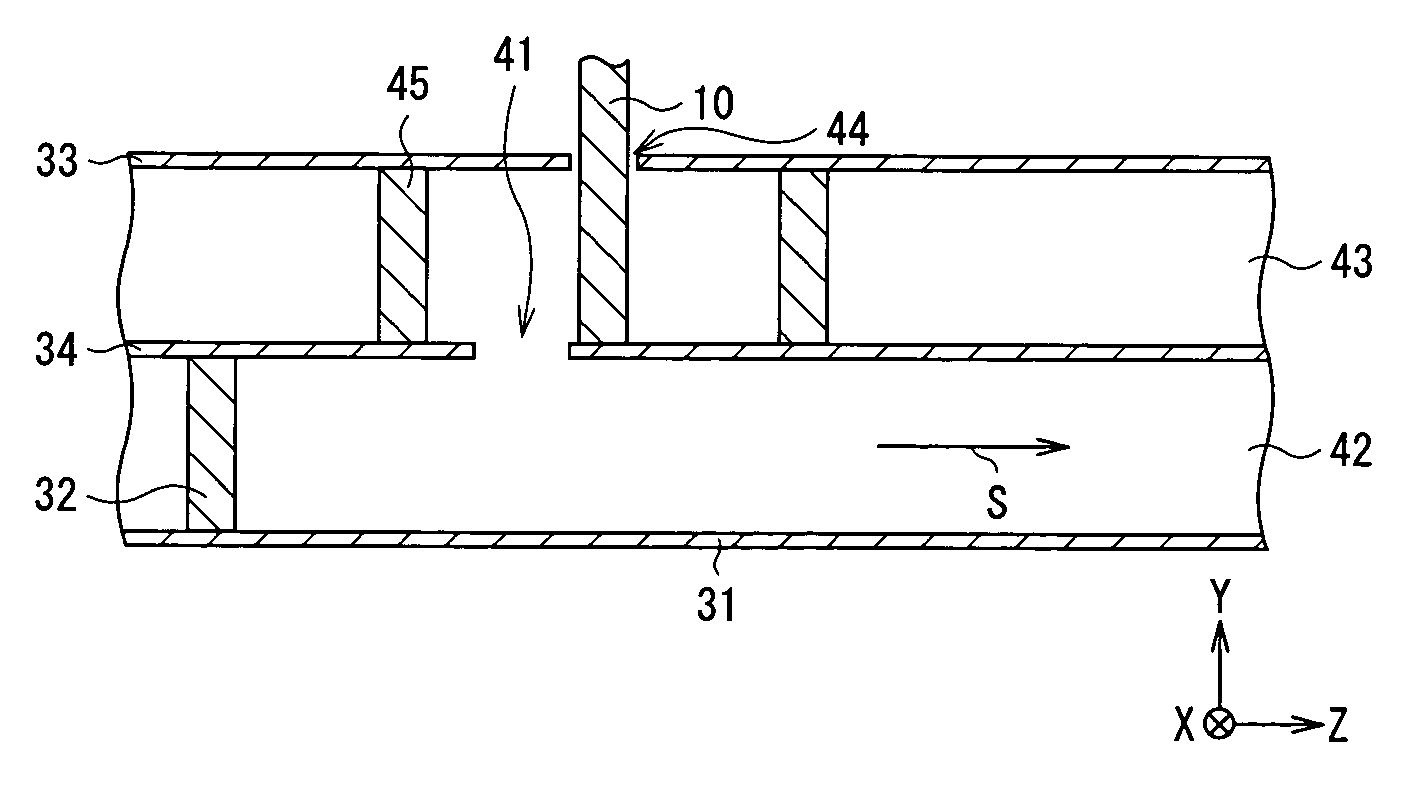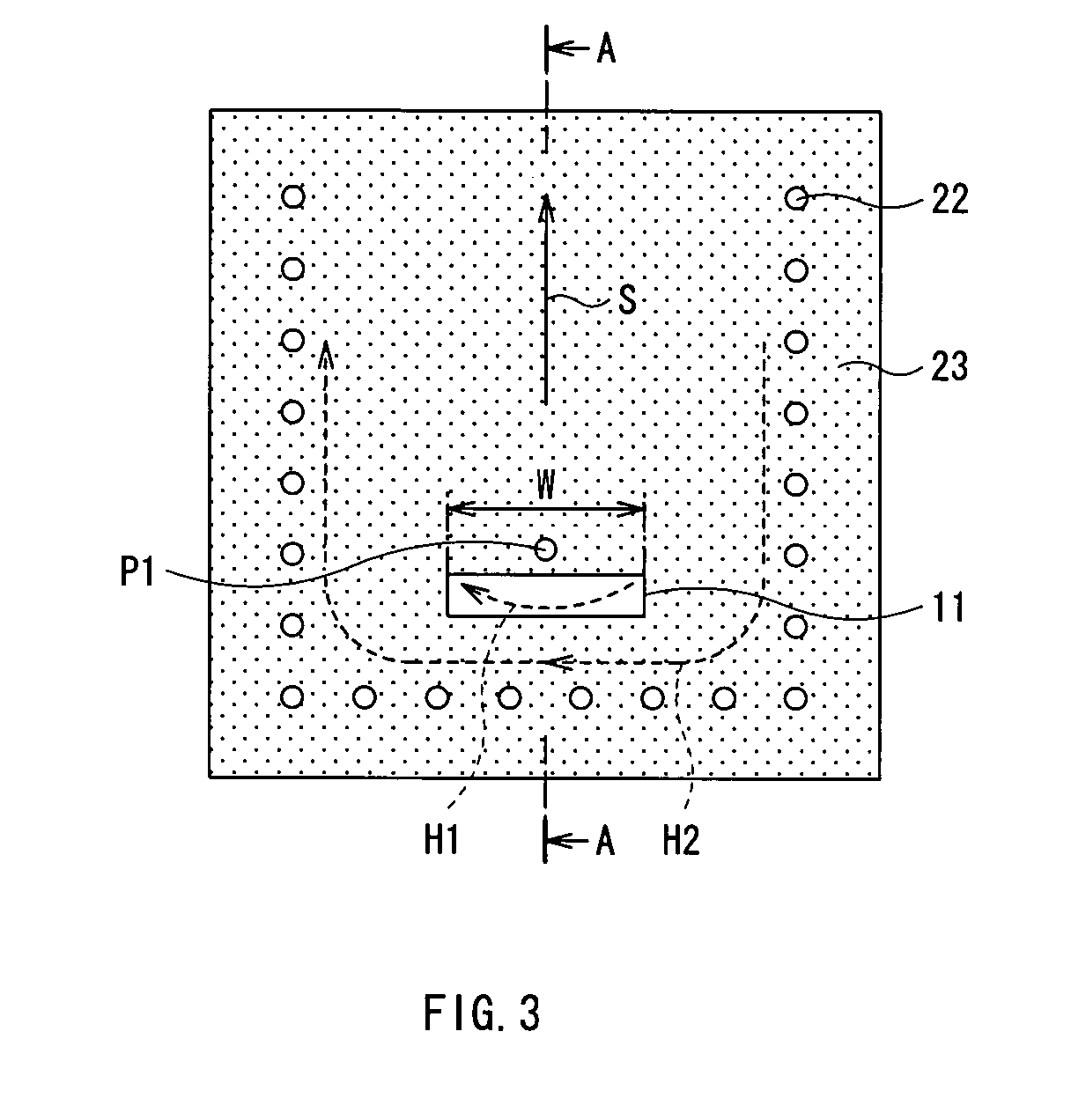RF module and mode converting structure and method
a technology of converting structure and mode, applied in the direction of waveguides, electrical devices, multiple-port networks, etc., can solve the problem that the structure of connecting different waveguides has not been developed sufficiently
- Summary
- Abstract
- Description
- Claims
- Application Information
AI Technical Summary
Problems solved by technology
Method used
Image
Examples
first modification
[0073] FIG. 11 shows the configuration of an RF module in a first modification. FIG. 12 is a plan view of the RF module. In FIG. 11, for simplicity of the drawing, the thickness of the uppermost layer is omitted and hatched. In the first modification, a waveguide 90 in a multiple mode (double mode) is used as the second waveguide. In the configuration example, the TEM waveguide 10 is connected to an input / output portion of the waveguide 90 in the double mode.
[0074] The waveguide 90 has a dielectric substrate 72, ground electrodes 91 and 93 facing each other, and a plurality of through holes 92 as conductors for bringing the ground electrodes 91 and 93 into conduction. In a region surrounded by the ground electrodes 91 and 93 and the through holes 92, for example, electromagnetic waves propagate in two modes in the directions S1 and S2 in the diagram. The through holes 92 are arranged in, for example, an almost square shape as a whole.
[0075] A structure of connecting the TEM waveguid...
second modification
[0080] FIGS. 15 to 17 show the configuration of an RF module according to a second modification. In FIG. 15, to simplify the drawing, the thickness of an intermediate layer is omitted and hatched. FIG. 17 corresponds to a section taken along line C-C of FIG. 15.
[0081] The RF module of each of the configuration examples has only one electromagnetic wave propagation region on the second waveguide side. In the modification, a waveguide 60 having a multilayer structure as the second waveguide has a plurality of electromagnetic wave propagation regions.
[0082] The waveguide 60 has two dielectric substrates 52 and 53, three ground electrodes 61, 63, and 64 provided on the dielectric substrates 52 and 53 so as to face each other, and a plurality of through holes 55 and 62 as conductors each for bringing at least two ground electrodes of the ground electrodes 61, 63, and 64 into conduction. The lower ground electrode 61 is uniformly provided on the bottom face of the lower dielectric substra...
PUM
 Login to View More
Login to View More Abstract
Description
Claims
Application Information
 Login to View More
Login to View More - R&D
- Intellectual Property
- Life Sciences
- Materials
- Tech Scout
- Unparalleled Data Quality
- Higher Quality Content
- 60% Fewer Hallucinations
Browse by: Latest US Patents, China's latest patents, Technical Efficacy Thesaurus, Application Domain, Technology Topic, Popular Technical Reports.
© 2025 PatSnap. All rights reserved.Legal|Privacy policy|Modern Slavery Act Transparency Statement|Sitemap|About US| Contact US: help@patsnap.com



